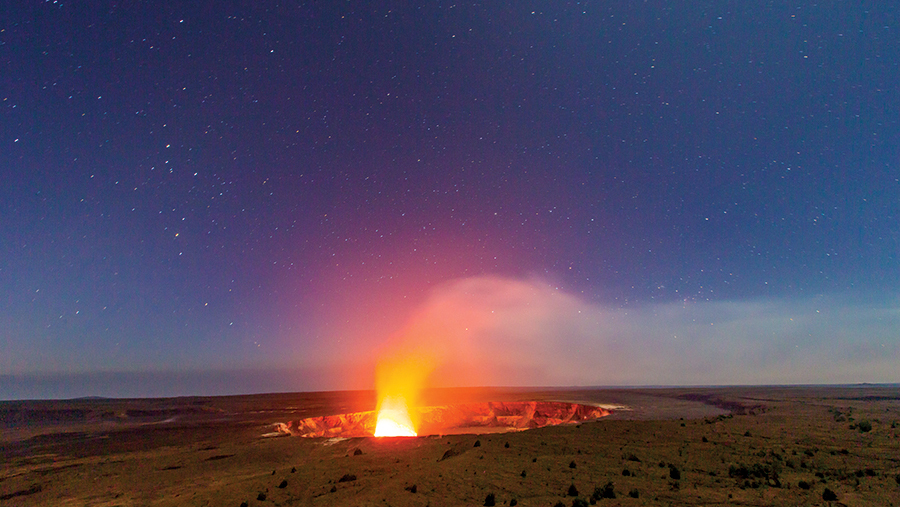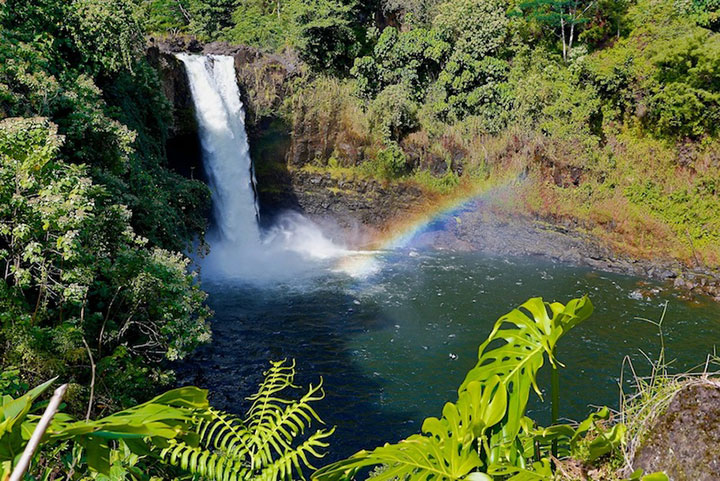Located on the northeastern side of the island of Hawaii, Hilo offers breathtaking natural beauty plus all the amenities of a vibrant town. On the geographic flipside of the volcanic Kohala Coast, the region is blessed with dramatic waterfalls, fertile rainforests and blooming gardens. It’s also home to Hilo International Airport and is a convenient stop on your way to Hawaii Volcanoes National Park, located 45 minutes south.
A busy farming and fishing area in early times, Hilo evolved into a commercial center for the sugar industry in the 1800s. Downtown Hilo was built around its crescent-shaped bay and became the seat of county government. Today, Downtown Hilo is a charming town offering museums, art galleries, shops and restaurants.
Discover the area’s fascinating history at the Lyman Museum, learn about the terrifying tsunamis that nearly swallowed Hilo at the Pacific Tsunami Museum or head to the newly built Imiloa Astronomy Center, a world-class attraction housed in three striking titanium cones (representing the three tallest mountains on the island of Hawaii: Maunakea, Maunaloa and Hulalalai).
To taste some of Hawaii’s exquisite produce or buy local crafts, try the Hilo Farmers Market in Downtown Hilo. See more local culture when you browse the art at the East Hawaii Cultural Center. Or, purchase a Hawaiian keepsake at one of Hilo’s many popular local shops.
Hilo has plenty of natural beauty, too. The Liliuokalani Gardens is a peaceful respite and features Japanese-style fishponds, pagodas and rock gardens on its 30 acres, while Wailuku River State Park is home to the 80-foot Waianuenue (Rainbow Falls) and Peepee Falls. Visit the nation's only rainforest zoo, Panaewa Rainforest Zoo, to see a collection of exotic plants and animals, including two Bengal tigers. Whatever your itinerary, a visit to Hilo is worth the trip to experience an authentic taste of the island of Hawaii.
Here, we recommend some sightseeings to you, which is not the final arrangement on March 11.
Hawaii Volcanoes National Park
During a volcanic eruption, we are reminded that our planet is an ever-changing environment whose basic processes are beyond human control. As much as we have altered the face of the Earth to suit our needs, we can only stand in awe before the power of an eruption.
Volcanoes are also prodigious land builders - they have created the Hawaiian Island chain. Kīlauea and Mauna Loa, two of the world's most active volcanoes, are still adding to the island of Hawaiʻi. Mauna Loa is the most massive mountain on Earth occupying an estimated volume of 19,999 cubic miles. The current summit of Mauna Loa stands about 56,000 feet (17,000 m) above the depressed sea floor. This is more than 27,000 feet (8,230 m) higher than Mount Everest. In contrast to the explosive continental volcanoes, the more fluid and less gaseous eruptions of Kīlauea and Mauna Loa produce fiery fountains and rivers of molden lava. These flows, added layer upon layer, produced a barren volcanic landscape that served as a fountain for life. Hundreds of species of plants and animals found their way across the vast Pacific on wind, water, and the wings of birds. A few survived, adapted, and prospered during this time of isolation. The arrival of humans - first Polynesians, then Europeans - and the plants and animals they brought with them drastically altered this evolutionary showcase, this grand natural experiment.
Today Hawaiʻi Volcanoes National Park displays the results of at least 70 million years of volcanism, migration, and evolution in the Hawaiian Island-Emperor Seamount chain-processes that would thrust a bare land from the sea and clothed it with complex and unique ecosystems and a distinct human culture. Created to preserve the natural setting of Kīlauea and Mauna Loa, the park is also a refuge for the island's native plants and animals and a link to its human past. Park managers and scientists work to protect the resources and promote understanding and appreciation of the park visitors. Research by scientists at the Hawaiian Volcano Observatory makes Kīlauea one of the best understood volcanoes in the world, shedding light on the birth of the Hawaiian Islands and the beginnings of planet Earth. Each eruption is a reminder of the power of natural processes to change the air we breath, the ground we walk on, and the sea that surrounds this volcanic island we call home.

Rainbow Falls
The Rainbow Falls in Hilo are a good place to visit early in the morning perhaps even before breakfast. This broad waterfall in the Wailuku river is conveniently located within Hilo town. It cascades over a lava cave that according to legends is home to the ancient Hawaiian goddess Hina, the goddess of the moon.
The waterfall itself is a modest 80 ft high, which is not that high compared to the nearby, 422 ft, ‘Akaka falls. However, the Rainbow falls are more easily accessible and it is possible to see the falls from very close, compared to the ‘Akaka falls. Besides, a big selling point of these waterfalls are the many rainbows you can see in early morning.
Depending on the amount of rainfall upstream in the preceding days the falls can be either roaring or they can be reduced to a trickle. You can only see a rainbows that is caused by sunlight when you are standing with your back towards the sun. This is because rainbows are caused by reflection, refraction and dispersion of light in water droplets (find out more about rainbows). The water droplets in this case don’t come from rain, but from all the small water droplets that surround the falling water! The viewing area for the rainbow falls is east of the falls. If you want to have the sun in your back while you look at the falls, you need to do so in the morning because the sun rises in the east. So, to see the best rainbows you should arrive early on a sunny morning. It is also best if there is a lot of water flowing (and falling!) in the waterfall, but even with little water you can still see rainbows.
